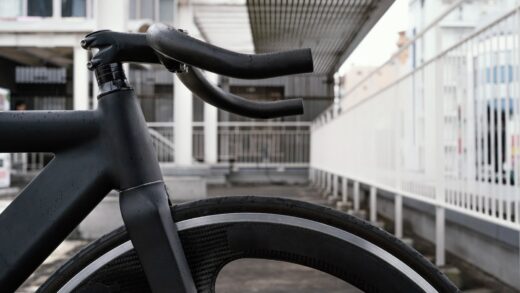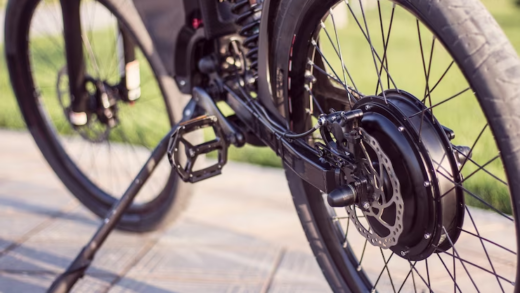Among cyclists, aluminum and carbon fiber seat posts reign supreme as the go-to choices. The perpetual debate about which material holds the upper hand is a testament to the ongoing deliberation.
It’s no surprise that individuals often find themselves grappling with the decision of which to opt for. If you’re entangled in a similar conundrum, rest assured that you’ve landed in the right spot. Curious to uncover the definitive verdict in the carbon seatpost vs aluminum debate?
Aluminum seat posts are renowned for their quality, durability, and wallet-friendly price range. Those who tackle demanding and rugged terrains often find solace in the reliability of aluminum. On the flip side, carbon seat posts are celebrated for their feather-light composition and exceptional damping properties. Tailored for both regular enthusiasts and seasoned professionals, carbon fiber seat posts are a prime choice.
This serves as a mere glimpse into the intricate comparison. To delve into a comprehensive exploration, join us in the forthcoming detailed discussion. Shall we commence?
Difference Between Aluminum vs Carbon Fiber Seatposts
To kick things off, let’s engage in a swift overview of the disparities between carbon fiber and aluminum seatposts.
| Aspects | Carbon Fiber Seatpost | Aluminium Seatpost |
|---|---|---|
| Material quality | Good | Good |
| Durability | Good | Better |
| Lifespan | Better | Good |
| Weight | Lightweight | Heavier |
| Damping Effect | Reduced | Partially reduced |
| Cost | Expensive | Cheaper |
In-Depth Analysis: Carbon Fiber Seatpost vs Aluminum
If you’ve found yourself pondering the question, “Is a carbon Seatpost worth the investment?” then this section holds the answers you seek. Dive into the detailed exploration to discern which Seatpost holds the key to enhancing your riding venture.
Material Quality:
When considering the worthiness of a carbon fiber or aluminum Seatpost, it’s imperative to delve into their distinct compositions. The comparison naturally gravitates towards evaluating their inherent strength.
Remarkably, both carbon fiber and aluminum exhibit comparable strength owing to their equivalent thickness. In fact, both materials boast an approximate strength of 500 kilonewtons. Consequently, discerning an outright winner in terms of strength proves challenging. However, the resilience of both materials is unquestionable, rendering them suitable candidates for constructing bike Seatposts.
- Aluminum undoubtedly stands as a robust material, but carbon fiber is no slouch either. In fact, certain manufacturers have pioneered the production of high-quality carbon fiber Seatposts that rival the strength of their aluminum counterparts. Nonetheless, a caveat exists – not all manufacturers offer top-tier carbon fiber quality. In contrast, the likelihood of encountering subpar aluminum Seatposts is relatively lower;
- For aluminum Seatposts, the decisive factor lies more in the crafting process. If you find yourself wavering in your decision-making, opting for an aluminum Seatpost can provide a sense of security;
- Winner: Aluminum Seatpost
Durability Consideration: Aluminum vs Carbon Fiber Seatpost

When it comes to durability, both aluminum and carbon fiber possess distinct breaking points. Aluminum stands renowned for its robustness, capable of withstanding rigorous ride conditions, friction, and vibrations. Does this imply it’s impervious to damage?
Not quite. Despite its durability, aluminum Seatposts can develop cracks due to impactful encounters or rough rides. These cracks might remain unseen, but their presence cannot be discounted.
In terms of durability, aluminum generally holds an advantage over carbon fiber. While some might hold differing views, acknowledging the existence of robust carbon fiber Seatposts, a significant issue surfaces with carbon fiber’s propensity to fracture outright.
In instances of severe impact or strain, aluminum may succumb to critical damage or breakage, yet there exists a possibility of bending in certain scenarios, offering a glimmer of hope for restoration.
Contrarily, the same leniency cannot be afforded to carbon fiber Seatposts. The material tends to experience catastrophic failure without much warning. Consequently, it’s prudent to not place undue hope on the longevity of a carbon Seatpost compared to its aluminum counterpart.
- Winner: Aluminum Seatpost
Longevity:
Predicting the lifespan of your bicycle’s Seatpost is an inherently uncertain matter, despite the potential for extending its tenure through consistent maintenance. This endeavor, however, does not guarantee an exact timeline for its endurance.
Nonetheless, insights derived from material quality and user experience permit us to formulate an educated estimation.
As previously highlighted, aluminum Seatposts tend to exhibit wear and develop cracks as they accrue more usage. In contrast, carbon fiber demonstrates a lesser propensity for such issues. While carbon fiber may not possess a predetermined shelf life, it exhibits resilience against premature fatigue.
Unless confronted with a substantial impact that surpasses its breaking point, a carbon fiber Seatpost is likely to remain in satisfactory condition.
- Winner: Carbon Fiber Seatpost
Weight Factor:
One of the paramount distinctions between carbon fiber (CF) and aluminum manifests in the weight of the Seatpost.
- Inherently, aluminum bears a heavier composition compared to carbon fiber. Opting for an aluminum Seatpost introduces an inevitable increase in the overall weight of your bicycle.
- Conversely, carbon fiber boasts a lightweight nature. Incorporating a carbon fiber Seatpost into your bike’s build results in minimal weight addition. The advantage of reduced bicycle weight contributes to enhanced usability and convenience.
The weight-saving attributes of carbon Seatposts play a pivotal role in their widespread popularity.
- Winner: Carbon Fiber Seatpost
Explore our prime recommendations for top-tier Carbon fiber Seatposts available on the market.
| Seatpost | Features |
|---|---|
| EC90 Carbon Fiber Seat Post | Crafted with precision to ensure optimal knee protection and shock absorption. This Seatpost’s accurate angle design safeguards your knees while providing a shockproof riding experience. |
| Litetop Carbon Seatpost | Constructed from 3K carbon fiber, this Seatpost stands as an epitome of extreme lightweight design. Elevate your cycling journey with a Seatpost that embodies minimal weight and enhanced performance. |
Dampening Performance:
When deliberating on a bicycle Seatpost, the dampening effect stands as a critical consideration. This attribute serves to mitigate the friction and vibrations experienced by the upper body and lower back during rides.
- Insufficient dampening can result in uncomfortable bruising for cyclists. Enter the carbon Seatpost with its notably superior dampening prowess. It effectively minimizes the harshness of friction, offering a smoother and more comfortable ride. If you’re curious whether a carbon Seatpost can truly make a difference, the answer is unequivocally yes;
- On the flip side, aluminum, being inherently rigid, fails to absorb the impact effectively. Instead, it tends to channel the friction-induced forces towards the rider’s upper and lower body.
Consequently, for optimal dampening, carbon Seatposts are the preferred choice, particularly for road bikes. Even if your bicycle boasts an aluminum frame, the incorporation of a carbon Seatpost is still viable and can contribute to reduced dampening.
A noteworthy tip: exercise caution while fitting the saddle onto the Seatpost. If your previous saddle isn’t performing up to par, consider upgrading to a premium selle italia saddle for enhanced comfort.
- Winner: Carbon Fiber Seatpost
Cost Consideration:
In the realm of carbon fiber vs aluminum Seatposts, the former tends to carry a heftier price tag. This price discrepancy stems from the intricate manufacturing process involved in producing carbon fiber components.
The elaborate processing required by carbon fiber elevates its production cost beyond that of aluminum. Occasionally, you might stumble upon a carbon fiber Seatpost within the price range of its aluminum counterpart. However, exercise caution, as these may not exhibit the desired quality. A genuine high-quality carbon Seatpost comes with a substantial price tag.
Consequently, if budget considerations hold sway, opting for an aluminum Seatpost presents a more economical choice.
- Winner: Aluminum Seatpost
Final Decision: Carbon vs Aluminum Seatpost

That was an intense showdown, wasn’t it? The decision-making process might currently feel daunting, with both aluminum and carbon Seatposts exhibiting commendable attributes. Rest assured, both materials hold merit contingent on their quality.
Should you find yourself in the position of selecting one, it’s prudent to weigh your priorities concerning Seatpost attributes. If durability is paramount, then aluminum or high-grade carbon Seatposts are your allies. On the other hand, if weight and dampening capabilities top your list, carbon takes center stage. For rigorous rides, aluminum stands as the preferred option, while for everyday cycling, carbon fiber shines brightly.
By now, you’re well-equipped to make the right choice tailored to your riding aspirations.
FAQ
Seatposts come in various diameter sizes, with 27.2mm being the most prevalent. Other diameter options span from 21.15mm to 35mm. Prior to making a choice, it’s crucial to accurately measure the diameter requirement that suits your bicycle.
Beyond the widely recognized carbon and aluminum variants, there exist additional alternatives like titanium and suspension Seatposts. While aluminum and carbon Seatposts remain the norm, titanium Seatposts are relatively rare and are typically paired with titanium frames. Suspension Seatposts are known for their robustness and higher weight.
Spotting potential cracks in your carbon Seatpost involves a careful examination. Look for any visible scratch marks on the surface. Additionally, you can perform a coin test. Gently tap the suspected area with a coin and listen for the sound produced. A crack would yield a dull thud instead of the usual tapping sound.
Conclusion
With this comprehensive discussion, we’ve covered the nuances of carbon Seatposts versus their aluminum counterparts. If you’ve journeyed through our analysis, you’re likely equipped with the insights you sought. Regardless of whether you opt for aluminum or carbon Seatposts, remember the significance of regular maintenance to uphold their performance.






